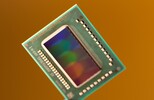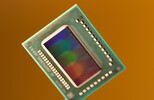Intel Core i7-2820QM vs Intel Core i7-2675QM
Intel Core i7-2820QM
► remove from comparison
Der Intel Core i7-2820QM ist ein Quad-Core Prozessor basierend auf der Sandy Bridge Architektur. Anfang 2011 ist er der zweitschnellste mobile Prozessor für Notebooks hinter dem i7-2920XM. Er bietet 4 Kerne und kann dank Hyperthreading 8 Threads gleichzeitig bearbeiten. Im Vergleich zu den Clarksfield Quad-Cores wird der 2820QM bereits in 32nm gefertigt. Der langsamere 2720QM ist etwas geringer getaktet und bietet deutlich weniger Level 3 Cache (6 vs. 8 MB).
Sandy Bridge ist eine Weiterentwicklung der Arrandale Architektur. Neben Optimierungen sind besonders die neuen 256 Bit AVX Instruktionen im CPU Teil und der verbesserte Turbo 2.0 erwähnenswert. Weiterhin sind nun ebenfalls AES Funktionen und ein verbesserter Dual Channel DDR3 Speichercontroller direkt im Prozessor integriert.
Die intergrierte Intel HD Graphics 3000 Grafikkarte ist direkt in der CPU untergebracht und teilt sich mit dieser den Level 3 / Last Level Cache. Dadurch sinkt zwar die Prozessorleistung etwas bei aktivierter Grafik, die Grafikleistung ist jedoch deutlich besser als bei der alten Intel HD Graphics und auf dem Niveau einer Nvidia Geforce 310M Einstiegsgrafikkarte. Dank Turbo Boost wird sie von 650 MHz bis 1300 MHz getaktet.
Die Performance liegt durch den größeren Cache und die höhere Taktung etwas über dem Core i7-2720QM und damit deutlich vor dem bisherigen Spitzenreiter, dem i7-940XM. Dadurch ist die Quad Core CPU für alle Anwendungen und Spiele ausreichend schnell. Einen ausführlichen Test der starken Quad Core Sandy Bridge Prozessoren finden Sie hier.
Im Vergleich zu den Sandy Bridge Doppelkernprozessoren sind die Quad Core CPUs mit einer höheren TDP spezifiziert und eignen sich daher nur für große Notebooks. Im Vergleich zu den Clarksfield CPUs beinhaltet die TDP jedoch nun auch die Grafikkarte, wodurch sie im Schnitt sparsamer wurden.
Intel Core i7-2675QM
► remove from comparison
Der Intel Core i7-2675QM ist ein Quad-Core Prozessor basierend auf der Sandy Bridge Architektur. Er bietet 4 Kerne und kann dank Hyperthreading 8 Threads gleichzeitig bearbeiten. Der Basistakt von 2,2 GHz kann dank Turbo Boost bei ausreichender Kühlung auf 2.8 GHz (Belastung von 4 Kernen), 3 GHz (2 Kerne) und 3,1 Ghz (1 Kern) dynamisch gesteigert werden. Im Vergleich zu den stärkeren Core i7 Prozessoren fehlt dem 2675QM wie beim 2630QM (Vorgänger) die VT-d und Trusted Execution Funktionen.
Sandy Bridge ist eine Weiterentwicklung der Arrandale Architektur. Neben Optimierungen sind besonders die neuen 256 Bit AVX Instruktionen im CPU Teil und der verbesserte Turbo 2.0 erwähnenswert. Weiters sind nun ebenfalls AES Funktionen und ein verbesserter Dual Channel DDR3 Speichercontroller direkt im Prozessor integriert.
Die integrierte Intel HD Graphics 3000 Grafikkarte ist direkt in der CPU untergebracht und teilt sich mit dieser den Level 3 / Last Level Cache. Dadurch sinkt zwar die Prozessorleistung etwas bei aktivierter Grafik, die Grafikleistung ist jedoch deutlich besser als bei der alten Intel HD Graphics und auf dem Niveau einer Nvidia Geforce 310M Einstiegsgrafikkarte. Dank Turbo Boost wird sie von 650 MHz bis 1200 MHz getaktet. Der sehr ähnliche Core i7-2670QM bietet im Vergleich eine geringere Turbo Boost Frequenz für die Grafikkarte von 1100 MHz.
Die Performance liegt knapp unterhalb des älteren Core i7-2720QM, welcher um 200 MHz höhere Turbo Boost Taktraten aufweist. Dadurch sollte der i7-2675M auch den Desktop Core i7-940 schlagen und für alle Anwendungen ausreichend Leistung aufbringen können.
Im Vergleich zu den Sandy Bridge Doppelkernprozessoren sind die Quad Core CPUs mit einer höheren TDP spezifiziert und eignen sich daher nur für große Notebooks. Im Vergleich zu den Clarksfield CPUs beinhaltet die TDP jedoch nun auch die Grafikkarte, wodurch sie im Schnitt sparsamer wurden.
| Model | Intel Core i7-2820QM | Intel Core i7-2675QM | ||||||||||||||||||||||||||||||||||||||||||||||||||||||||||||||||||||||||||||||||||||||||||||||||||||||||||||||||||||||||||||||||||||||||||||||||
| Codename | Sandy Bridge | Sandy Bridge | ||||||||||||||||||||||||||||||||||||||||||||||||||||||||||||||||||||||||||||||||||||||||||||||||||||||||||||||||||||||||||||||||||||||||||||||||
| Series | Intel Core i7 | Intel Core i7 | ||||||||||||||||||||||||||||||||||||||||||||||||||||||||||||||||||||||||||||||||||||||||||||||||||||||||||||||||||||||||||||||||||||||||||||||||
| Serie: Core i7 Sandy Bridge |
|
| ||||||||||||||||||||||||||||||||||||||||||||||||||||||||||||||||||||||||||||||||||||||||||||||||||||||||||||||||||||||||||||||||||||||||||||||||
| Clock | 2300 - 3400 MHz | 2200 - 3100 MHz | ||||||||||||||||||||||||||||||||||||||||||||||||||||||||||||||||||||||||||||||||||||||||||||||||||||||||||||||||||||||||||||||||||||||||||||||||
| L1 Cache | 256 KB | 256 KB | ||||||||||||||||||||||||||||||||||||||||||||||||||||||||||||||||||||||||||||||||||||||||||||||||||||||||||||||||||||||||||||||||||||||||||||||||
| L2 Cache | 1 MB | 1 MB | ||||||||||||||||||||||||||||||||||||||||||||||||||||||||||||||||||||||||||||||||||||||||||||||||||||||||||||||||||||||||||||||||||||||||||||||||
| L3 Cache | 8 MB | 6 MB | ||||||||||||||||||||||||||||||||||||||||||||||||||||||||||||||||||||||||||||||||||||||||||||||||||||||||||||||||||||||||||||||||||||||||||||||||
| Cores / Threads | 4 / 8 | 4 / 8 | ||||||||||||||||||||||||||||||||||||||||||||||||||||||||||||||||||||||||||||||||||||||||||||||||||||||||||||||||||||||||||||||||||||||||||||||||
| TDP | 45 Watt | 45 Watt | ||||||||||||||||||||||||||||||||||||||||||||||||||||||||||||||||||||||||||||||||||||||||||||||||||||||||||||||||||||||||||||||||||||||||||||||||
| Transistors | 995 Million | 995 Million | ||||||||||||||||||||||||||||||||||||||||||||||||||||||||||||||||||||||||||||||||||||||||||||||||||||||||||||||||||||||||||||||||||||||||||||||||
| Technology | 32 nm | 32 nm | ||||||||||||||||||||||||||||||||||||||||||||||||||||||||||||||||||||||||||||||||||||||||||||||||||||||||||||||||||||||||||||||||||||||||||||||||
| Die Size | 216 mm2 | 216 mm2 | ||||||||||||||||||||||||||||||||||||||||||||||||||||||||||||||||||||||||||||||||||||||||||||||||||||||||||||||||||||||||||||||||||||||||||||||||
| max. Temp. | 100 °C | |||||||||||||||||||||||||||||||||||||||||||||||||||||||||||||||||||||||||||||||||||||||||||||||||||||||||||||||||||||||||||||||||||||||||||||||||
| Socket | FCBGA1224, FCPGA988 | BGA | ||||||||||||||||||||||||||||||||||||||||||||||||||||||||||||||||||||||||||||||||||||||||||||||||||||||||||||||||||||||||||||||||||||||||||||||||
| Features | HD Graphics 3000 (650-1300MHz), DDR-1066/1333/1600 Memory Controller, HyperThreading, AVX, Quick Sync, Virtualization | HD Graphics 3000, DDR-1333 Memory Controller, HyperThreading, AVX, Quick Sync, Virtualization (VT-x) | ||||||||||||||||||||||||||||||||||||||||||||||||||||||||||||||||||||||||||||||||||||||||||||||||||||||||||||||||||||||||||||||||||||||||||||||||
| iGPU | Intel HD Graphics 3000 (650 - 1300 MHz) | Intel HD Graphics 3000 (650 - 1200 MHz) | ||||||||||||||||||||||||||||||||||||||||||||||||||||||||||||||||||||||||||||||||||||||||||||||||||||||||||||||||||||||||||||||||||||||||||||||||
| Architecture | x86 | x86 | ||||||||||||||||||||||||||||||||||||||||||||||||||||||||||||||||||||||||||||||||||||||||||||||||||||||||||||||||||||||||||||||||||||||||||||||||
| $568 U.S. | ||||||||||||||||||||||||||||||||||||||||||||||||||||||||||||||||||||||||||||||||||||||||||||||||||||||||||||||||||||||||||||||||||||||||||||||||||
| Announced | = 5192 days old | = 4889 days old | ||||||||||||||||||||||||||||||||||||||||||||||||||||||||||||||||||||||||||||||||||||||||||||||||||||||||||||||||||||||||||||||||||||||||||||||||
| Manufacturer | ark.intel.com |
Benchmarks
Average Benchmarks Intel Core i7-2820QM → 0% n=0
Average Benchmarks Intel Core i7-2675QM → 0% n=0
* Smaller numbers mean a higher performance
1 This benchmark is not used for the average calculation













